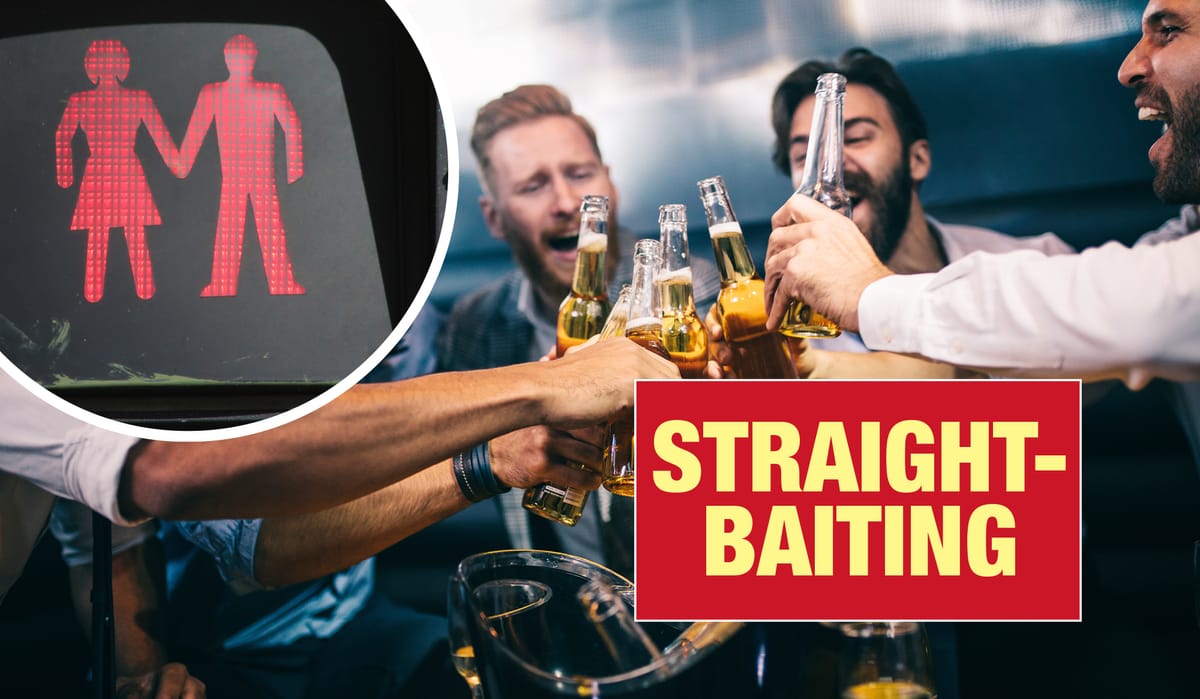You've heard of queerbaiting, but what about straightbaiting?
Jake Hall explores homonormative forces in the queer community, pointing to how they bypass opportunities for coalition-building

Words: Jake Hall
Straight isn’t just a sexuality, it's a lifestyle.
If queerness is exemplified in the popular psyche by topless go-go dancers, non-binary baristas with septum piercings, and drag queens sniffing poppers, then straightness is an endless parade of ‘Live, Laugh, Love signs, tradwives, and men repressing their emotions. These are crude and wide-reaching stereotypes, but they illustrate the basic fact that there are still societal ways to ‘pass’ as straight, heterosexual ideals to strive towards.
You’ve probably heard the word ‘heteronormativity’, a term coined in 1991 by social theorist Michael Warner, but the discursive seeds of this idea date back to the earlier work of lesbian feminists like Gayle Rubin and Adrienne Rich, who coined the term ‘compulsory heterosexuality.’ These academics all argued that straightness is deemed as the global norm – upheld by laws, social policing, and cultural constructs like the gender binary – and that it is ‘compulsory’ in the sense that you are punished and ostracised if you don’t comply. To be queer – and especially to be visibly queer – is to be alien, to be marginalised.
Heteronormativity has a lesser-known counterpart, homonormativity. In 1999, scholar Lisa Duggan attended a ‘Liberty For All’ conference in New York City. Here, she came across the Independent Gay Forum (IGF), which branded itself as “reasonable, centrist and pragmatic.”
"Heteronormativity has a lesser-known counterpart, homonormativity"
